5 Cars Posting Gains in a Soft Market
It’s been an eventful three months, and another update to the Hagerty Price Guide has landed. The unofficial start to the auction season kicked off in January with Kissimmee and Scottsdale, and now that the driving season is upon us, market activity has picked up since the start of the year. While the market overall remains nuanced, there were some clear standouts that gained notable value in the past few months and offered some lessons for where the hobby currently stands.(Read more to learn about the methodology behind the Hagerty Price Guide.)
1953–58 Studebaker Commander Station Wagon: +44%
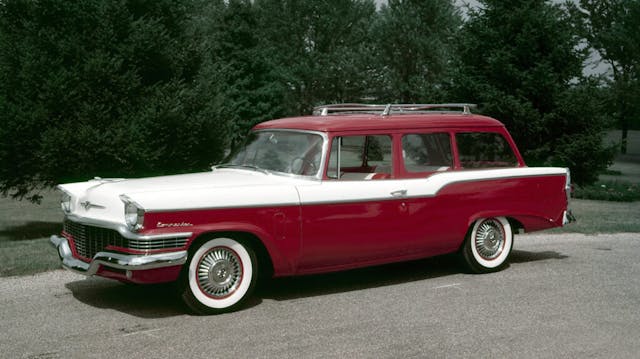
With its 1953 redesign, Studebaker’s Commander was the carmaker’s top-of-the-line model. Compared to the previous series, the Commander was significantly upgraded, with a stunning and more aerodynamic-looking design. Although the appearance was radical next to Studebaker’s larger competitors, the car’s success would be hampered by poor marketing and the company’s assumption that buyers vastly preferred four-door models; tooling up production to meet that perceived demand would prove a misstep for Studebaker (one of many the brand would make in the postwar period leading to its demise). Unable to meet demand for two-door models, early quality control issues, and an inability to compete with the cheap prices offered by the big three, Studebaker struggled with its customer base.
Since shuttering its doors in 1964, Studebaker has been overlooked by the broad pool of enthusiasts, left to a die-hard group of marque fans to keep the flame alive. The good news today is that their tenacity has paid off. There is very good parts support for a car that is far less common than its contemporaries, and there are more options for buyers who now find station wagons far cooler than they once might have.
A handful of Commander wagons popped up over the past few months, bringing strong and consistent values, above where the market has been historically. Not to worry, though, as these are still somewhat affordable buys; despite a 44 percent increase, a pristine Commander wagon can be had for under $40,000, and a driver-condition example in the $20,000 range. Is this a resurgence of the 1950s independent automakers among enthusiasts? Likely not. However, it does show the strong love for station wagons of all eras and marques—even the ones many of us forgot about.
1985–86 Audi Sport Quattro: +30%
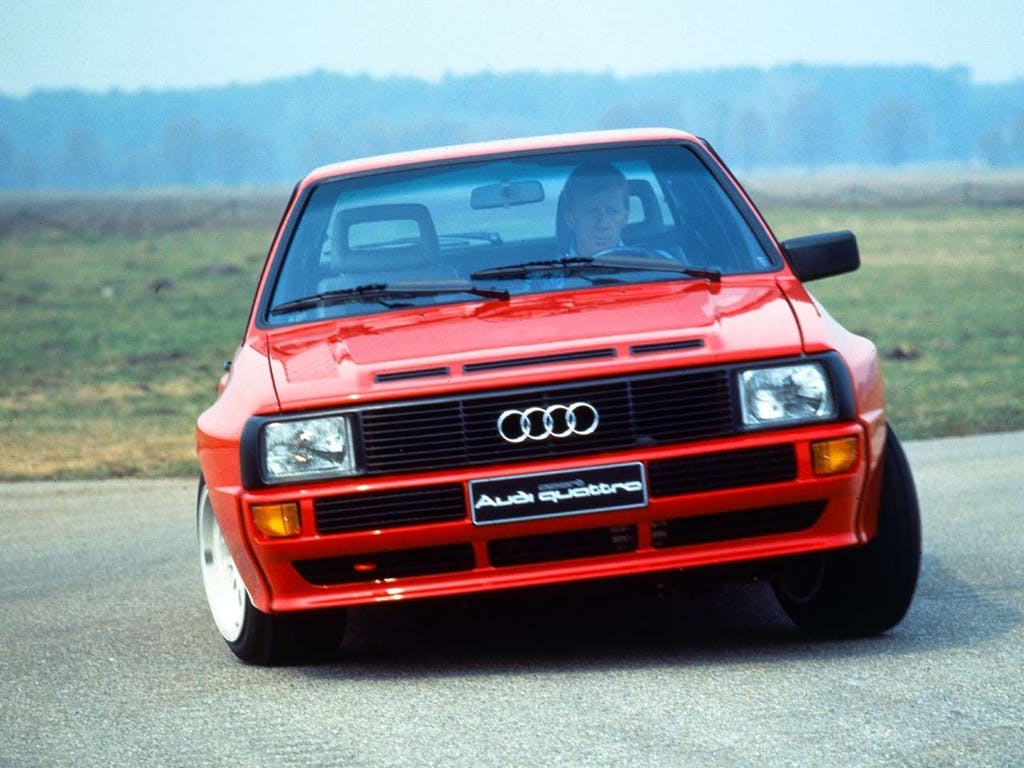
At the peak of Group B’s reign as the most unhinged class of racing, Audi led the way. The Quattro’s all-wheel-drive system changed the game completely, its prodigious grip necessary to put down all the power the turbocharged cars were producing. It would set the standard for rally racing moving forward.
The Sport Quattro was the second iteration of Audi’s dominant Group B racer, and it was shortened and lightened compared to the Ur-Quattro in order to better attack the tight, challenging roads of rally racing. Of course, as with many motorsports series, the FIA required a certain amount of road-legal examples to be produced in order to homologate the model for racing, and the road-going Sport Quattros kept Audi within the rules. With just 214 examples made, they were hyper-exclusive right out of the gate. Add in the fact that they share DNA with the insane rally cars, and you have a car that is highly sought after.
There are many reasons why the Sport Quattro has seen such a big jump in the past few months. These were already expensive cars; a pristine example could run in the neighborhood of $500,000, but that number’s increased yet again. With each passing year, the legend of Group B continues to grow, and it attracts new audiences—and new buyers. As the apex predator of the era, demand for these Audis is on the rise. There is also the fact that we haven’t seen one of these cars hit the market in quite some time, and while a car offered by RM Sotheby’s in January wasn’t a concours-quality example, it blew past the expected price of a concours car. One sale doesn’t constitute a trend; however, when dealing with a pool of just 214 cars, we have to take market examples when they come and make some educated leaps as to where the data are pointing. Right now, the data point upwards. Group B race cars have already sold for seven figures, so the direction their street-going counterparts are taking was only a matter of time.
1984–89 Subaru XT: +25%

Nowadays, the term “sporty Subaru” is synonomous with the Impreza-based WRX and STI. For good reason, too, as Subaru was a force to be reckoned with on the World Rally Championship (WRC) circuit, and the WRX/STI were the closest mere mortals could come to being Colin McRae. But they weren’t Subaru’s first shots at making a sporty car to attract more buyers to the brand. We had the funky and exceptionally rad SVX, and before that, there was the XT.
Now, the XT name might be familiar to some as the sporty version of the Forester, but for a short time, it was actually a car model—a wedge-shaped and weird-looking one at that. It was the ’80s, after all, and anything sporty needed to look like a door stop, apparently. Subaru sure did nail everything about the 1980s with this car. Unfortunately, the Japanese giant managed to sell just under 100,000 of these things, and before long it would be relegated to memory. There are a number of enthusiasts flying the XT flag, however, and recent sales above price guide–appropriate values have driven values jumped a few grand. Despite that, you can still pick up an AWD, turbocharged XT in the neighborhood of $20,000. Will the XT follow the Brat as the latest old Subaru to gain traction in the collector world? Time will tell—they could be simply too wacky and uncommon to gain long-term traction.
1973–77 Chevrolet Monte Carlo: +24%
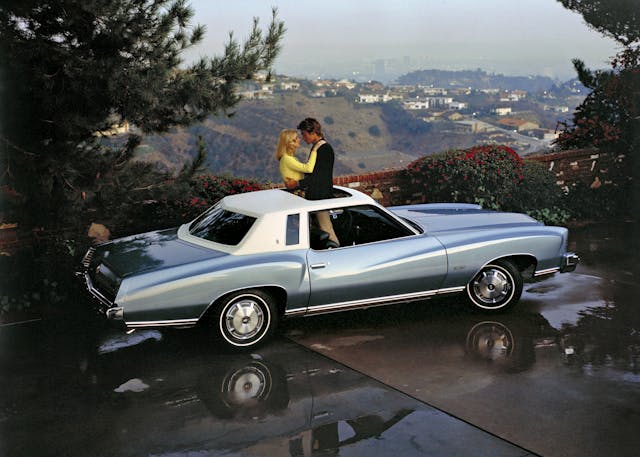
With the launch of the G-body platform, General Motors effectively cornered the personal luxury market when the redesigned Pontiac Grand Prix and all-new Chevrolet Monte Carlo arrived for 1970. Like it or not, these cars would set the standard for mid-size, sporty cars throughout the ’70s. The A-Body based 1973 Monte Carlo would come out of the gate strong, selling more than a quarter-million cars (over 50 percent of the total first-generation production), and sales numbers would increase from there.
Mid-’70s American cars are a bit like the late, great Rodney Dangerfield: Large, brash, and they just “don’t get no respect.” They’re hobbled by abysmal horsepower ratings, poor gearing, and awful parts support from the aftermarket. But despite all that, they have a certain charm to them. Nostalgia is a strong motivator, and it has a strong influence on what we’re willing to spend our hard-earned money on. While we can’t get in the head of every buyer, it is clear that with a number of strong sales the past quarter, the mid-’70s Monte is receiving some of the appreciation in the collector market that it’s been missing for far too long.
1964–70 Honda S600/S800: +21%
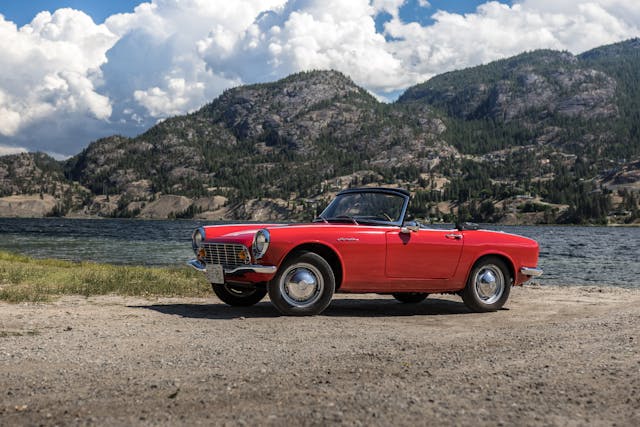
We may not think of it now, but Honda started life as a motorcycle company. That its first car, the S500, was a tiny, sporty roadster seems in hindsight a logical way to step into the world of four-wheeled transportation. These cars and the siblings that followed would solidify Honda as not just a car builder, but also as an engine builder. The tiny engines, (606cc in the S600 and 791cc in the S800) would make decent power for their size, but in Honda fashion they’re best known for their insane redlines (9500 rpm in the S600) and fantastic engineering. Turn the clock ahead three decades after the last S800 left the factory and Honda gave us a worthy successor in the incredible S2000.
Classic Japanese cars occupy a weird space—a few from the 1960s and ’70s, like the Toyota 2000GT and the Datsun 240Z, sit at the front of our consciousness. Others, like the Honda S600/800, have been criminally overlooked. Sure, they may be tiny for American consumers, but they carry everything that makes a sporty Honda so great, and were foundational in establishing how we think of Japanese enthusiast cars. People are taking notice lately, however, judging by the recent sales of two very good examples (one crested into six-figures). While this doesn’t mean that every S600 or S800 is a six-figure car now, it does demonstrate swift-growing interest, and that the S600/S800 are cars to watch.
***
Check out the Hagerty Media homepage so you don’t miss a single story, or better yet, bookmark it. To get our best stories delivered right to your inbox, subscribe to our newsletters.
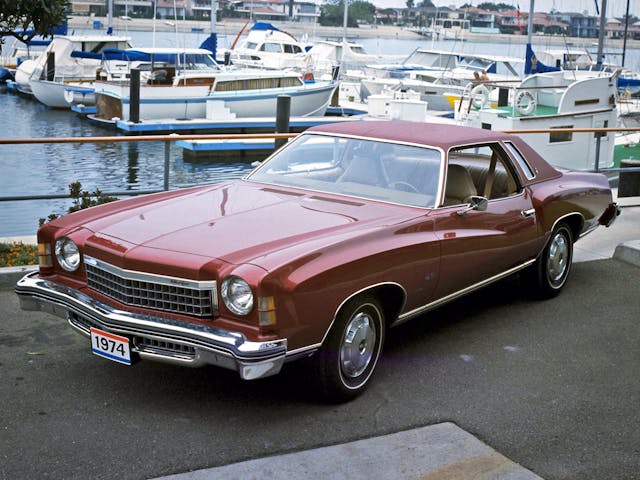


Studebaker sold wagons to the Union Army during the Civil War.
I don’t think the market is that soft but only have anecdotal evidence. I tried to bid on a 25k mile ‘82 Celica GT (carbureted) yesterday which finally fetched $16,250. An 11k mile MR2 fetched almost $50k the day before. These are Porsche values of 5 or 6 years ago. In general, as pristine cars become extremely rare, the prices have only one way to go. So, this may be a temporary lull if indeed it exists.
I really enjoy all the Hagerty articles and comments. I like all these cars
Beauty is in the eye of the beholder.
Just added 1971 VW Ferrari kit car to the stable. Its hideoderous! 5 wheels, one you steer with. red primer. Gets too much attention its so cool. Love at first sight
It was August 1972 when me and three good friends headed East in my 1963 turquoise/white VW bus from California to New York. Heading home we came across trucks and trains loaded with new 73 cars ….
The 1973 Chevy Monte Carlo in maroon or burgundy- STUNNING! The special split in the back glass – very cool. They really caught my eye and I was hard pressed to keep up with these trucks with our 40 horse VW.
I will never forget the trip, my buddies and the site of these beautiful new vehicles playing out in front of us.
And yes I wish I kept the $700. bus.
Thanks for the write and trip down memory lane.
Those ’70’s Monte’s, Gran Prix, Cutlass and Regals were very decent especially the early ’70’s versions as they had some real power. If you were 12 – 20 years old in the early ’70’s and your Dad or neighbor had one … well you want one now because you are in your early to late 60+ years old, you got money after a lifetime of bustin it and … yeah you want one in your garage.
Or you grew up watching Cale Yarborough, Dale Earnhardt, Darrell Waltrip etc driving the Monte Carlos every weekend and when you had the chance bought one. I did that in 1986 and still love it, the only tiny regret I have is that I sold a ’68 Bel Air to afford it. My ’77 has 197,000 miles on it, though it spends 95% of its time under a cover in the garage, it is still fun to drive.
There once was a kit sold that converted the Monte Carlo into a Custom Cloud – similar to a Rolls Royce…
The 1973-1977 Monte Carlo was bulky, baroque, and tasteless when new, and still is. Someone once used the term “K-Mart classic”, and that term fits these things perfectly. For a good-looking GM car of the same years, see the Grand Prix, Cutlass Supreme coupe, or (for 1976-77), the Buick Regal coupe.
I note just the ‘73 Monte Carlo. After that the bumpers turned me off ….
Personal taste of course but I do agree the Buick as noted was also quite tastefully done.
Thanks –
All the best.
I did drivers ED in a ’75 or ’76 Monte Carlo. I’m not sure who thought using the car with the longest hood GM made (ever?) was a good idea, but there we were. But I nailed the parallel parking in a long bed single cab Chevrolet pickup first time on my drivers test!
LOL, I always thought my 76 Monte Carlo had the longest hood ever made also. It also had the heaviest doors.
I had a 1976 Monte Carlo when I was young and I really liked that car. It was a smooth ride and very comfortable. I hardly ever see one at the car shows and almost never see one for sale. I have had all kinds of cars from Caddies to a Gremlin and I appreciate them all for each has their own characteristics.
Myself I’ve always been a huge fan of the early Monti Carlo’s , but then I have odd tastes.
I currently own a 71 Boat Tail Rivi, 83 C-10 step side low rider done up as a Pro Stock race truck , 72 Karmin Ghia and a military 46 Indian Chief with a side car and a 30 cal Browning MG mounted on it and I’m currently looking at 2 different Golden Hawk Stude’s one of which may possibly be added to my collection.
In the past I’ve had a 68 XKE, several Vettes, Camaro’s and several Nova’s all of different generations , Ford model T’s and A’s , a couple of Datsun Z cars , a Tee Bucket , 39 Chevy sedan, K5 Blazer , a couple of SEL Mercedes and a couple of 30-40 Ford coupe & pick up hot rods, and a TR6 & 7 so I guess my tastes pretty much run the gambit ?
I drive and own what I like to drive and like to look at pretty much and brands really don’t make a difference to me to much as most of my rides have been either stock or modified any where’s from mild to wild and everything in between. With many being built specifically for racing either drags or hill climbs/ rally driving and the rest built / restored strictly for show .
Variety is the spice of life after all , and after restoring classics for well > 60 years and counting I’ve found that most every car has it’s own appeal , whether it be because it’s rare or just plain fun to drive or Funky and different in it’s own right. I’m glad that when I grew up many of these cars that are so valuable now , were just used cars you could find at any used car lot and that could be bought for a song by comparison to today values.
As an example I bought my 71 Rivi from the original owner with 46K original miles on it for $1800 bucks which had all the service records, the pink slip, title and every piece of past maintenance paperwork included. If I recall I bought my XKE for around $1000- 1200 which even came with free electrical problems ,,surprise surprise on that one, I know how we ALL love our Lucas electric systems , now don’t we ? LOL
Try finding either one for that now and actually my 71 Riviera is the only one I’ve seen at any of the car shows I’ve gone to in the last 15 years, even at the Nationals I haven’t see one. Just how rare it really is I don’t know , but I sure haven’t seen another in well > 20 years or more and those were either wrecked or rusted out . I had seen a 73 several years back , but to me those aren’t quite as unique or desirable IMO having those big old UGLY monster shock absorber type bumpers ! Yuck, I hate those on any car !
Just own and drive what ever you really like and if your as lucky as I’ve been in the past , you’ll likely have several options to pick from. I’ve rarely regretted owning any of my classics , even the off the wall strange ones or rare ones, and remember there’s just the right butt for every seat , so they say.
The early 1970s Monte Carlos have grown on me over the years with the 454 and 402 BB. The ones with the four speed definitely make it a rare edition. These 197001972 would’ve made great convertibles should GM had desired to experiment.
These are always what the market will bear. I remember back in the day in the 1900’s (lol) my HS parking lot had many MC’s on the lot. Me… I drove a 1969 Rally Z28 and beat the crap out of it racing and being a teenager….
They are all junk.